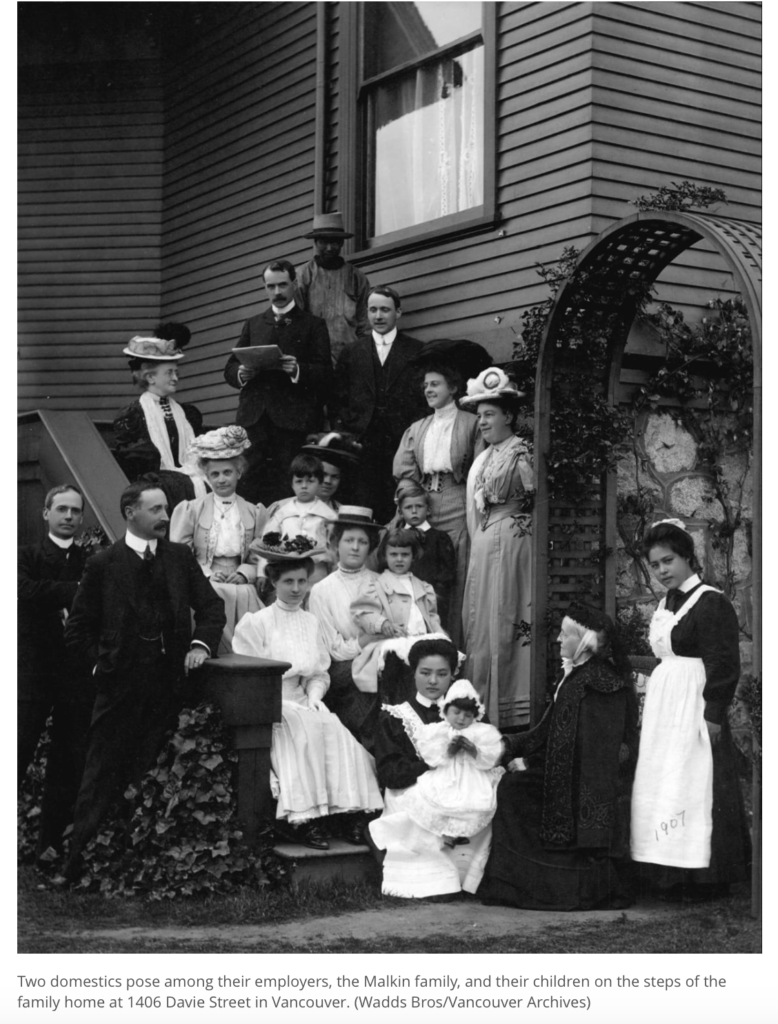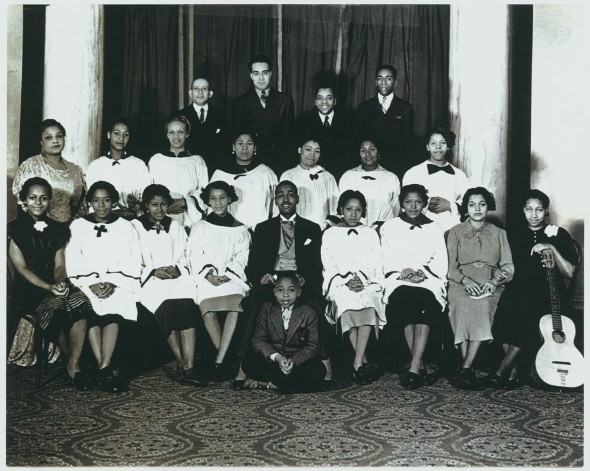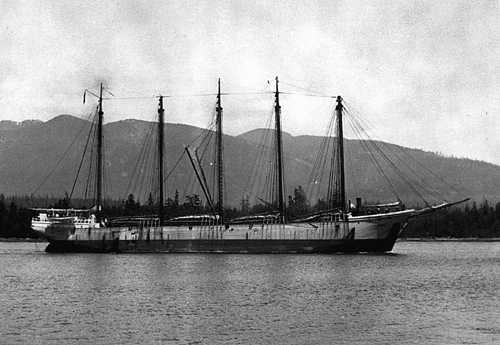Park Lane was the official name for the T-shaped intersection that ran between Prior Road and Jackson Avenue, and Main and Union Streets. However, its unofficial name came to be Hogan’s Alley.
How could such a small area hold such a concentration of life? This is the most powerful strength of this vibrant place. It helps to know what surrounded this area as well: on one end was the AME – Fountain Chapel Church, and close by was the Pacific Central Station (the terminus for the Canadian Pacific Railway), which is where most Africana Descent men were employed. Coupled with the fact that there were discriminatory policies around the city that made it difficult for African Descent people to move anywhere beyond the East End, Hogan’s Alley became a natural place to settle.
The neighbourhood was a collection of shacks, cottages and southern-style “chicken house” restaurants, many of which doubled as speakeasies. The residential quarters of the Brotherhood of Sleeping Car Porters was also located there. It was a place where on one side, there were brothels and illegal gambling dens, and on the other side there were people trying to raise their families. According to Strathcona resident Austin Phillips’ interview in the book Opening Doors:
There was nothing but parties in Hogan’s Alley – night time, anytime, and Sundays all day. You could go by at 6 or 7 o’clock in the morning, and you could hear jukeboxes going, you hear somebody hammering the piano, playing the guitar, or hear some fighting, or see some fighting, screams, and everybody carrying on. Some people singing, like a bunch of coyotes holler – they didn’t care what they sounded like just as long as they was singing.
What could’ve been Vancouver’s long-standing African Descent community was never destined to be. Unfortunately, many (read upper-class white) Vancouver residents didn’t like the reputation that Hogan’s Alley gained as a slum, nor did they do anything to help improve the situation. Instead, the City of Vancouver (the City) engaged in a slow displacement, or “slum-clearance” of this neighbourhood. The first effort dated back to the early 1930s, where the City declared the area from Dunlevy to Clark an industrial area, forbidding mortgages or home improvements, effectively leaving the neighbourhood to deteriorate.
The City continued its slum-clearance, shifting to the term “urban renewal.” The intent of these efforts was to ensure that valued land was efficiently used, of course, value meant strictly monetary and no consideration was made toward what the area actually meant to the residents. With the increased use of cars and migration to suburban areas, Leonard Marsh proposed an Urban Renewal plan which subsequently led to the “Vancouver Redevelopment Study,” that would see a freeway system connecting Vancouver’s waterfront/downtown core with the suburbs. As the ageing Georgia Viaduct would need extensive renovation and areas cleared to make way for this, Hogan’s Alley, was once more targeted. The whole area – Strathcona and Chinatown – was slated for clearance to make way for an 8 lane freeway. After six years of struggle from residents opposed to this project, the Urban Renewal project was abandoned, but not before the new Georgia Viaduct was approved and built right over Hogan’s Alley.
The name all but disappeared from Vancouver’s memory until the turn of the twentieth century when people such as writer and poet Wayde Compton revived it through the Hogan’s Alley Memorial Project. Organizations, such as the African Descent Society BC and Hogan’s Alley Society are striving to deliver the area back to its original community.



















